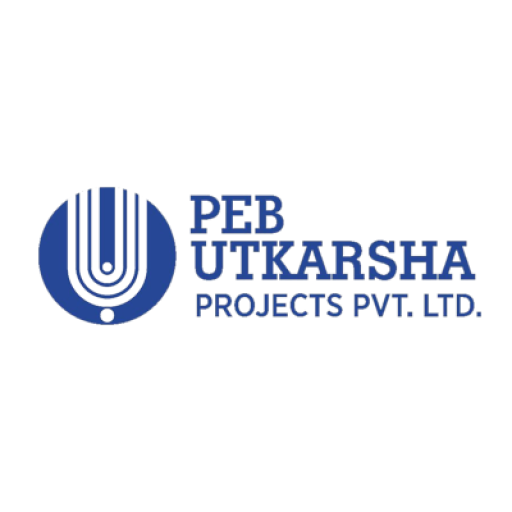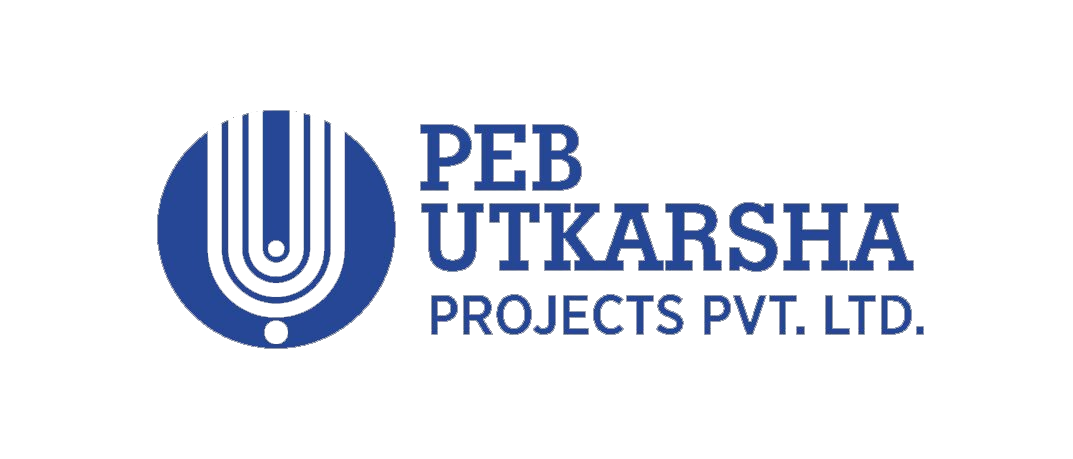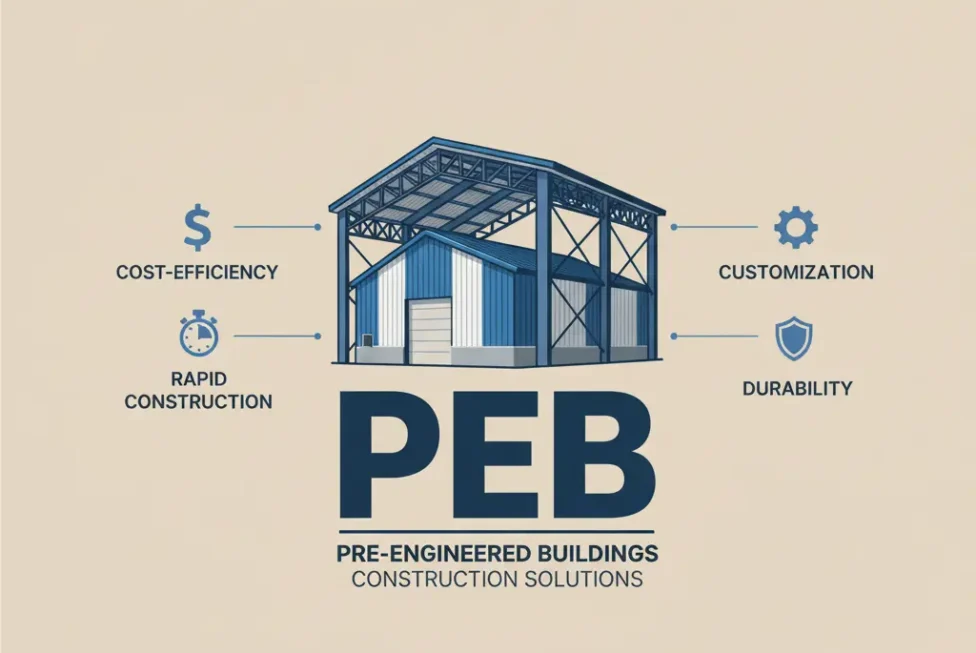In the construction industry, acronyms and technical terms are common, and one such term that has gained significant attention in recent years is PEB. If you’ve ever come across the term “PEB” and wondered what it stands for, you’re not alone. Understanding PEB full form in construction is essential for anyone involved in construction, architecture, or project management. In this blog, we will explain what PEB stands for, its role in modern construction, and why it’s becoming increasingly popular in building projects across the globe.
1. PEB Full Form in Construction: What Does PEB Stand For?
PEB stands for Pre-Engineered Building in construction. A Pre-Engineered Building (PEB) is a structure that is designed and manufactured in a factory setting before being assembled at the construction site. Unlike traditional construction methods that involve building from scratch on-site, PEBs rely on pre-manufactured components such as steel frames, wall panels, roofing systems, and other structural elements that are custom-built based on the project’s requirements.
The advantage of using Pre-Engineered Buildings is that they are cost-effective, time-efficient, and can be designed to meet the specific needs of the project. The entire design process is powered by advanced software that ensures precision, customization, and minimal waste during construction.
2. How Pre-Engineered Buildings (PEBs) Work in Construction
In a PEB Project , the components of the building are designed in advance using specialized engineering software. These components are then fabricated in a factory under controlled conditions. Once the components are ready, they are transported to the construction site and assembled with minimal effort.
The key components of a PEB structure typically include:
Steel frames: These provide the core structure of the building and are designed to handle large loads and withstand extreme weather conditions.
Roofing and wall panels: These are pre-manufactured in the factory and are made from materials such as steel or aluminum, providing excellent durability and weather resistance.
Insulation and finishes: PEBs can also be designed with insulation to ensure energy efficiency, keeping the internal environment comfortable and reducing operational costs.
3. Why PEBs Are Gaining Popularity in the Construction Industry
a) Faster Construction Timeline
One of the biggest advantages of using PEBs in construction is the speed at which the building is completed. Since most of the components are pre-manufactured in a factory, they are ready to be assembled upon delivery. This drastically reduces construction time, allowing projects to be completed much faster than traditional buildings.
In fast-paced industries where time is of the essence, such as warehousing, manufacturing, and logistics, PEBs offer a significant advantage in terms of getting operational spaces ready quickly.
b) Cost-Effective Solution
Traditional construction methods often involve higher costs due to the need for on-site labor, material procurement, and lengthy project timelines. PEBs, however, are produced in bulk in a controlled factory environment, which reduces costs related to labor and material wastage. Additionally, the shorter construction time leads to reduced project overheads, making PEBs an economical choice for many businesses.
c) Customization and Flexibility
While PEBs are pre-engineered, they can be highly customized to meet the specific needs of a project. Whether you need extra-large spans for storage, a unique roofing system, or specific insulation to optimize energy consumption, PEB structures can be designed to fit your requirements. This customization makes PEBs versatile, whether for industrial buildings, commercial spaces, or even large warehouses.
d) Durability and Low Maintenance
PEBs are built using high-quality materials, often steel, which is known for its strength, resilience, and resistance to wear and tear. These buildings are designed to withstand extreme weather conditions, making them highly durable. Additionally, PEBs require minimal maintenance due to their robust construction, reducing long-term operational costs.
4. Applications of PEBs in Construction
PEBs are widely used in various types of construction projects, including:
Warehouses: The flexibility in design and large, column-free spans make PEBs ideal for warehouse applications, where high ceilings and wide spaces are required.
Industrial Buildings: Factories and manufacturing plants benefit from the quick construction timeline and ability to accommodate heavy machinery and large-scale operations.
Commercial Spaces: PEBs can also be used for office buildings, showrooms, and retail spaces, where both aesthetics and functionality are important.
Sports Facilities: Stadiums, gymnasiums, and indoor arenas can be built using PEBs, offering both speed and versatility in design.
5. Sustainability of PEBs in Construction
Sustainability is a growing concern in the construction industry, and PEBs offer an eco-friendly alternative to traditional buildings. The materials used in PEBs, such as steel, are often recyclable, and the manufacturing process results in less material wastage. Additionally, the energy efficiency of PEBs, particularly when insulation is incorporated into the design, helps reduce energy consumption and lowers the building’s overall carbon footprint.
In a world increasingly focused on reducing environmental impact, PEBs align with the principles of sustainable development.
FAQ
What is the full form of PEB in construction?
The full form of PEB in construction is Pre-Engineered Building. These are buildings that are designed and manufactured in a factory setting before being assembled on-site, offering numerous advantages in terms of cost, speed, and customization.
What are the benefits of using PEBs in construction?
The benefits of PEBs include faster construction times, cost-effectiveness, durability, low maintenance, and high customization options. These structures are ideal for a wide range of applications, including warehouses, industrial buildings, and commercial spaces.
Are PEBs eco-friendly?
Yes, PEBs are environmentally friendly. The materials used in PEBs, such as steel, are often recyclable, and the construction process results in less material wastage. Additionally, their energy-efficient designs help reduce the building’s carbon footprint.
How are PEBs different from traditional construction methods?
PEBs differ from traditional construction in that they are pre-manufactured off-site and assembled quickly on-site. Traditional construction involves more on-site work, requiring longer project timelines and higher labor costs. PEBs are cost-effective, quicker to build, and customizable to fit specific needs.
Can PEBs be used for all types of buildings?
Yes, PEBs can be used for a wide variety of buildings, including warehouses, factories, commercial offices, sports facilities, and more. Their versatility and customization options make them suitable for various industries and building types.
Conclusion
Understanding PEB full form in construction is just the first step in realizing the significant benefits these structures offer. Pre-Engineered Buildings are revolutionizing the construction industry, providing businesses with cost-effective, fast, and durable solutions. With customization options, sustainability benefits, and faster construction timelines, PEBs are quickly becoming the preferred choice for modern building projects.




